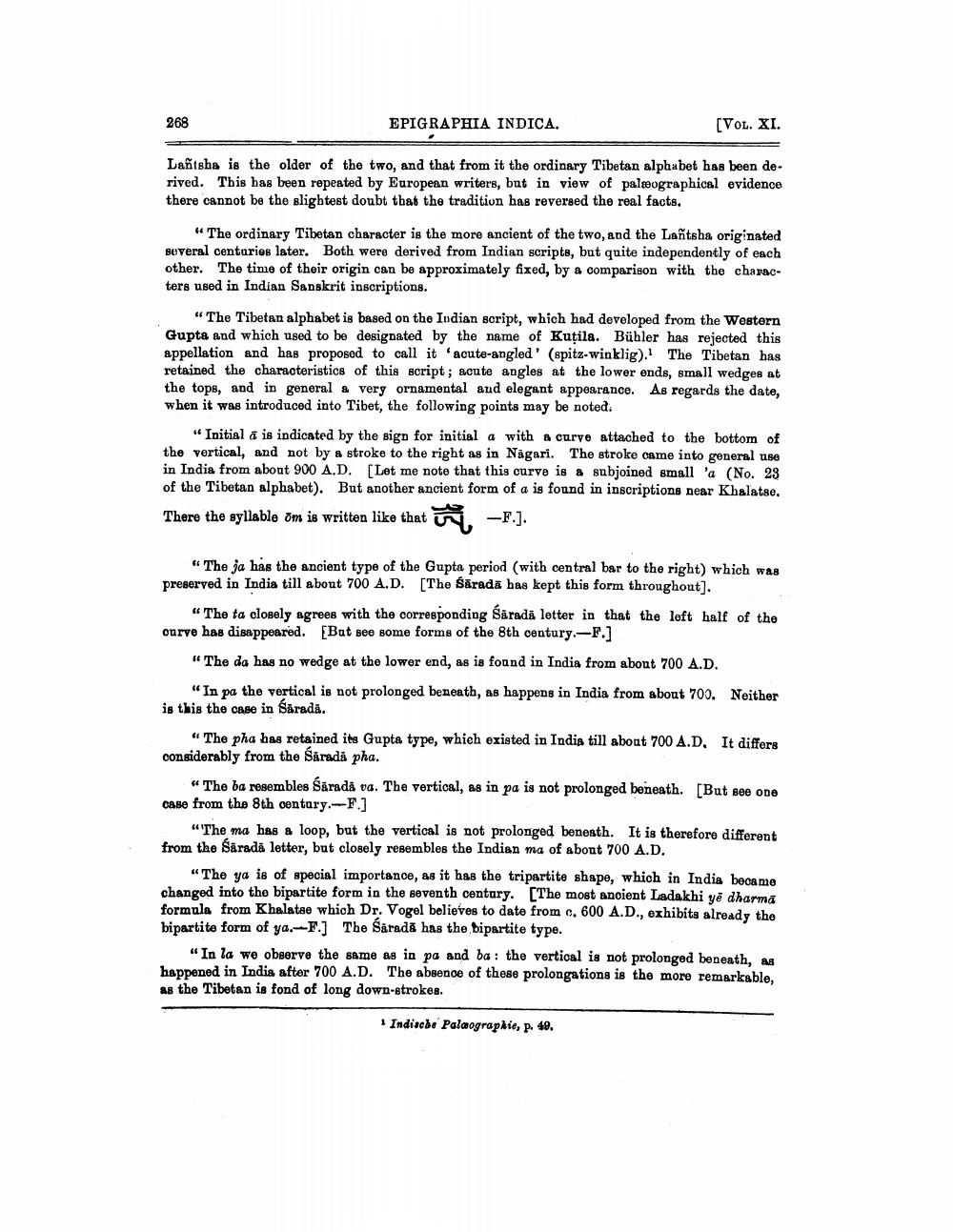________________
268
EPIGRAPHIA INDICA.
[VOL. XI.
Lantsha is the older of the two, and that from it the ordinary Tibetan alphabet has been derived. This has been repeated by European writers, but in view of paleographical evidence there cannot be the slightest doubt that the tradition has reversed the real facts.
" The ordinary Tibetan character is the more ancient of the two, and the Lantsha originated several centuries later. Both were derived from Indian scripts, but quite independently of each other. The time of their origin can be approximately fixed, by & comparison with the characters used in Indian Sanskrit inscriptions.
The Tibetan alphabet is based on the Indian script, which had developed from the Western Gupta and which used to be designated by the name of Kuţila. Bühler has rejected this appellation and has proposed to call it 'acute-angled' (spitz-winklig). The Tibetan has retained the characteristics of this script ; acute angles at the lower ends, small wedges at the tops, and in general a very ornamental and elegant appearance. As regards the date, when it was introduced into Tibet, the following points may be noted:
"Initial a is indicated by the sign for initial a with a curve attached to the bottom of the vertical, and not by a stroke to the right as in Nagari. The stroke came into general use in India from about 900 A.D. [Let me note that this curve is a subjoined small 'a (No. 23 of the Tibetan alphabet). But another ancient form of a is found in inscriptions near Khalatse. There the syllable om is written like that .-F.].
The ia has the ancient type of the Gupta period (with central bar to the right) which was preserved in India till about 700 A.D. [The Sārada bas kept this form throughout].
"The ta closely agrees with the corresponding Särada letter in that the left half of the ourvo has disappeared. But see some forms of the 8th century.-F.]
"The da has no wedge at the lower end, as is found in India from about 700 A.D.
"In pa the vertical is not prolonged beneath, as happens in India from about 700. Neither is this the case in Sáradă.
4 The pha has retained its Gupta type, which existed in India till about 700 A.D. It differs considerably from the Särada pha.
u The ba resembles Särada va. The vertical, as in pa is not prolonged beneath. [But see on case from the 8th century. .]
"The ma has a loop, but the vertical is not prolonged beneath. It is therefore different from the Sarada letter, but closely resembles the Indian ma of abont 700 A.D.
"The ya is of special importance, as it has the tripartite shape, which in India became changed into the bipartite form in the seventh century. [The most ancient Ladakhi ye dharma formula from Khalatae which Dr. Vogel believes to date from c, 600 A.D., exhibits already the bipartite form of ya.F.] The Sarada has the bipartite type.
"In la we observe the same as in pa and ba: the vertical is not prolonged beneath, as happened in India after 700 A.D. The absence of these prolongations is the more remarkable, as the Tibetan is fond of long down-strokes.
Indische Palæographie, p. 49.




